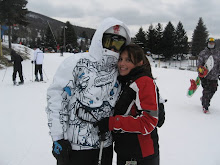Miguel Gonzalez
Eng 101.0800
Oct 29, 2010
Mrs.Bogacka
Outline of Research paper
Thesis: Throughout the year of 2010 G.Q Magazine is trying to promote a new kind of masculinity. Not metro, hetero, or retro sexual kind of man, more like a superman. A man that can do everything both sexes can do.
Main Point # 1
Male models are showing more than the usual. Just like the ladies, guys are exposing themselves more and more.
Ex. Calvin Klein Ad
My opinion- Back in the days of traditional masculinity guys would not show of their bodies’ parts like they are showing them now. This specific ad is unique to my research project because the model is showing what usually a woman would be showing.
Main Point # 2
underconstruction
Main Point # 3
Now men can wear the same clothes as women. When were unisex clothes back in style?
EX. $78 Alexandra Wang T-shirts which are unisex. Both women and men can wear.
My opinion- Now Wang is letting guys wear girl clothes and calling it unisex. This is funny to me because G.Q is promoting guys to model like women and dress like women. What’s next they want us to cook like them too?
Main Point # 4
You guessed it. Yes they do. G.Q wants guys to learn how to cook. What does this tell me? Man can be ladies too.
EX. G.Q’s 10 essential tips on how to cook
My opinion- throughout the whole 2010 year G.Q wants guys to do anything a girl can from modeling fashion, or cooking. Like a new kind of masculinity. For men that can do anything a women can.
Conclusion- My opinion

Your idea for a thesis is very interesting and original. Do you think GQ[underlined or italicized] is encouraging men to trade in their masculinity for gender ambiguity? Why do you think the men's magazine is doing this? Did you find any explanation for this in your secondary sources?
ReplyDeleteYour first and second point nicely lead into one another: men pose like women and men wear the same clothes as women. But how will you make the connection to men cooking? Why are all these changes taking place and what does this mean for men and traditional masculinity? Please work on this outline and include quotes/ideas from primary as well as secondary sources and format these in MLA style.